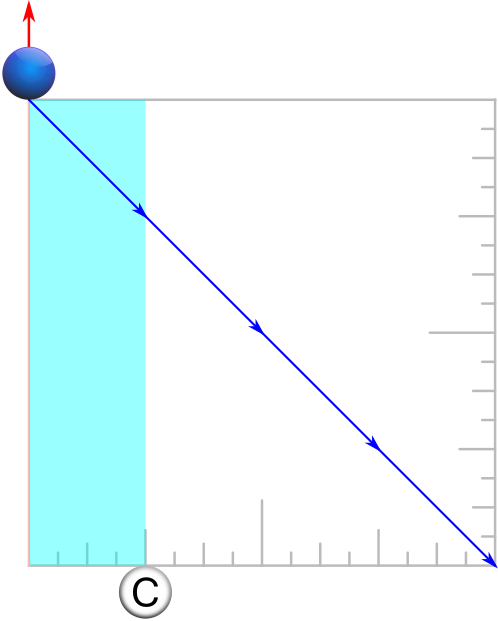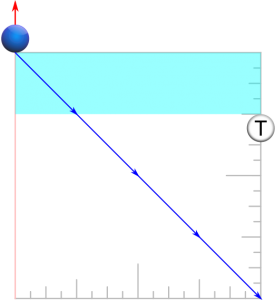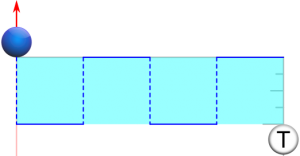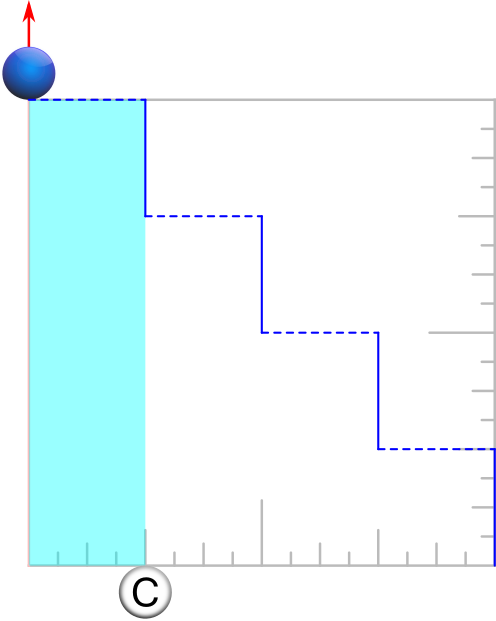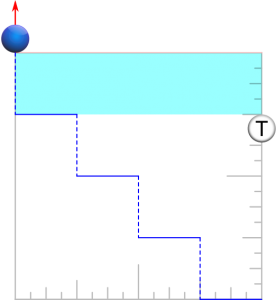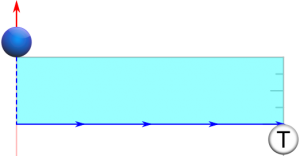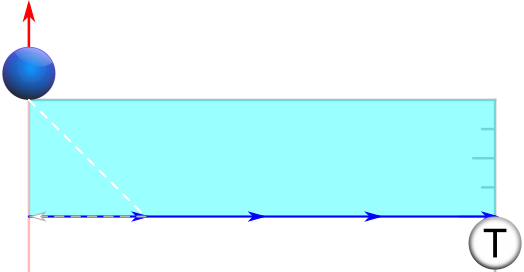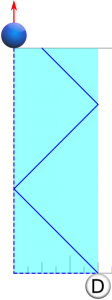SubSquare Patterns
We can stack squares, zigs, zags, 45° cross marks, circles, L shapes or whatever other shape fits perfectly into a square to count the number of internal squares of the shot rectangle we are facing.
We can also use “subsquare patterns.”
The Ups, Downs, Rights, Lefts, Zigs, and Zags for the subsquare patterns below are the same as the Master Square patterns in terms of direction, but instead of the Master Square’s sides, we now use the shot rectangle’s sides to constrain the line lengths. Unlike the Master Square patterns, the subsquare patterns have no destinations. They are only designed to determine the total number of subsquares that reside within a shot rectangle.
All patterns will be shown for cut shots to the right from Position 1 but can be applied from all Position 1 and Position 2 variations. All sequences are to be repeated until you reach the other end of the shot rectangle, counting the subsquares along the way. You can start at either end of the shot rectangle.
Zig Zag
Zig Back Zig
Zig Forward Zig
Sequence 1 and 2: Zig Down, Zig Down Same Length, Zig Down, Zig Down, …
The first line measures the first subsquare size. The rest of the lines retain that size and move beyond the boundary of the shot rectangle until we are across from or below its other end. Only count the Zigs or Zags for the total number of subsquares.
Open Square
Stairs
Sequence 1: Right, Down, Right Same Length, Down, Right, Down, …
Sequence 2: Down, Right, Down Same Length, Right, Down, Right, …
The first line measures the first subsquare’s size. The rest of the lines retain that size and move beyond the boundary of the shot rectangle until we are across from or below its other end.
High Dive
45 and Dive
Pennant Zig Zag
Sequence 1: Down, Right to Ball, Zag Up, Zig Up, Zag Up, Zig Up, …
Sequence 2: Right, Down to Ball, Zag Up, Zag Down, Zag Up, Zag Down, …
The first three lines are the same as the Master Square’s Pennant Pattern, but we retain the length of the third line and count it and all subsequent Zigs or Zags to determine the total number of subsquares. The Pennant Zig Zag subsquare pattern can be used to verify the standard Pennant pattern’s label, continuing upward from where the standard Pennant pattern left off. If the subsquares match the standard pattern’s label, we have added insurance that we have detected the proper shot label.
Flag to Open Square Pattern
Sequence 1: Down, Right to Ball, Up, Left, Up, Right, Up, Left, …

This is a double-check for the standard Flag pattern that was covered under the Position 1 patterns topic. Continuing upward from step 4 of the Flag pattern, it allows us to count the number of subsquares to make sure that the result matches the shot label detected via the Flag pattern.











